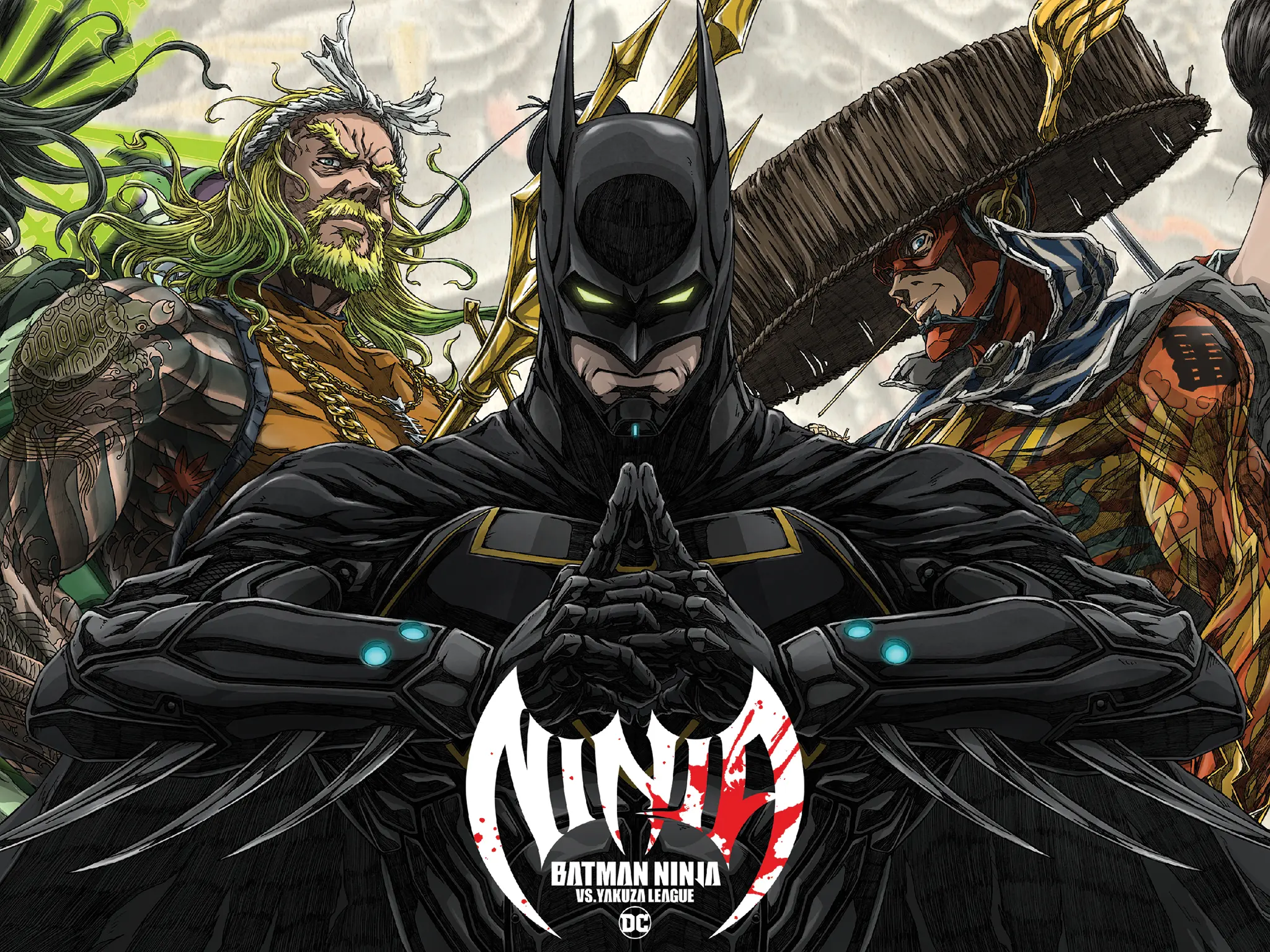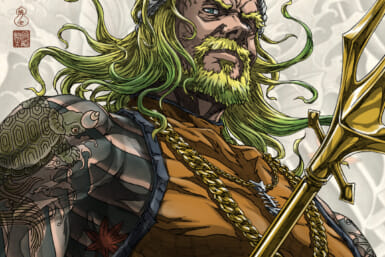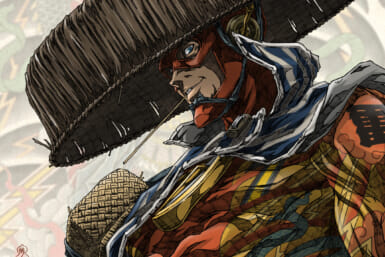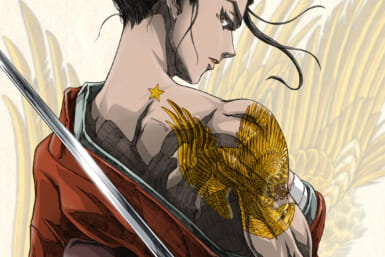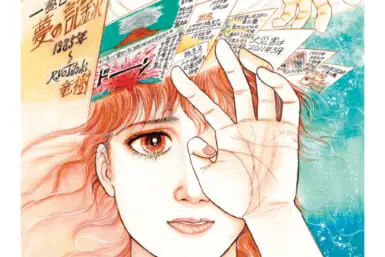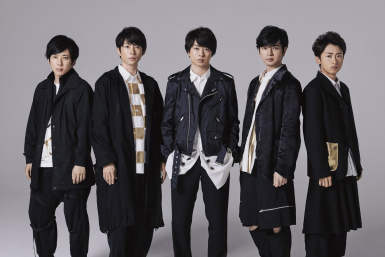In the real world, it might have been six years since the release of the critically-acclaimed Batman Ninja (2018) anime movie. But in the universe originally crafted by director Jumpei Mizusaki and writer Kazuki Nakashima, only one day has passed between the events of the first film and its follow-up: Batman Ninja vs. Yakuza League. Slated for release on March 21, 2025, Tokyo Weekender had a chance to catch an early screening of the sequel at Tokyo Comic Con 2024. Kicking into high gear barely 24 hours after Batman’s time-travel adventure in 16th-century Japan, the film opens with the Dark Knight’s realization that the present he’s returned to has radically changed. The Justice League no longer exists, Japan has disappeared, and yakuza gangsters with jetpacks regularly fall out of the sky. And then things get weird.
DC Heroes: Like a Yakuza
It quickly comes to pass that the Justice League members didn’t vanish but instead changed into alternative versions of themselves based around a yakuza motif. Now, “yakuza” is a very broad term that can be applied to anything from modern-day organized crime groups to their precursors like 18th-century gamblers or stevedores. With the help of co-director Shinji Takagi, the Batman Ninja vs. Yakuza League anime film uses all those definitions to reimagine DC’s most popular heroes. Some of the changes are mostly visual, like Superman becoming a kimono-clad mob boss with a jacket thrown over his shoulders like a mafia cape, or Aquaman sporting a fisherman’s headband to hint at the yakuza’s dock worker origins.
Other reimaginings run much deeper. The Green Lantern Jessica Cruz, for example, is reborn with the power to create mental projections of gambler paraphernalia like die or hanafuda playing cards. Fitting, since the name “yakuza” literally means “8-9-3” and refers to the worst possible hand in a hanafuda game. The Flash, on the other hand, gains a massive sandogasa bamboo straw hat that has become shorthand in period dramas for the yakuza. However, it was more commonly used by hikyaku (“flying legs”) couriers during the Edo period (1603 – 1867), making for a perfect thematic match for the Scarlet Speedster.
Wonder Woman looks at first glance like a stereotypical female yakuza boss, kimono and wakizashi short sword and all, but there is a rich pop-cultural basis for this portrayal, especially when she bares her shoulder to reveal a tattoo on her arm. This is a classic trope of period yakuza dramas where gangster women prove that, despite their appearances, they are really part of the Japanese underworld. The scene itself most likely goes all the way back to the Benten Kozo (1862) kabuki play where two yakuza members disguised as women are exposed because of their sleeve tattoos. All of these characters in the movie retain their superpowers, which makes for beautiful action scenes that become slightly more interesting with a little bit of knowledge of gangster cinema and Japanese history. That’s still just the first layer, though.
A Crash Course in Japanese Mythology
Underneath the yakuza veneer, the sequel to Batman Ninja also offers plenty of references to Japanese myths and legends, like how this alternative Earth is referred to by some characters as “Amatsukuni.” This is another name for Takamagahara, the Heavenly Plain where some of the most powerful Shinto gods reside. The Yakuza League technically exists outside this Amatsukuni but that doesn’t mean they don’t reference plenty of Japanese mythology.
In the comics, Wonder Woman wasn’t born the traditional way but was instead sculpted from clay and animated by Zeus on Themyscira, the island of Amazons. Through the lens of Japanese mythology, this changes in Batman Ninja vs. Yakuza League to Wonder Woman being born equally unconventionally from a giant flower or some kind of fruit, mirroring the birth of the folk hero Momotaro who emerged from a giant peach found floating down the river. The anime Wonder Woman also hails from Japan’s very own land of only women: Nyogo no Shima (also known as Nyogogashima), a mythical island that, since the Meiji period (1868 – 1912), became often translated as “Amazon Island” in Japanese literature. So that’s neat!
Then there is The Flash, nicknamed “Idaten” after a Sino-Japanese deity known as a protector of Buddhist monasteries. More importantly, Idaten is also known for his great speed of movement, a rarity in Chinese or Japanese mythology and a natural fit for a superhero who runs very fast. Then there is Aquaman, known in the movie as Suiryu (“water dragon”), most likely a nod to Ryujin, the dragon god king of the ocean who might also have served as an inspiration for Godzilla and, like Aquaman, commands all sea life.
In the anime, this includes a giant messenger turtle who serves as a reference to the myth of Urashima Taro, a fisherman invited to Ryujin’s palace. Although, fair’s fair, the way Suijin’s turtle moves is somewhat strange, seeing as it spins to kind of fly-jump away. That doesn’t sound like something from Japanese mythology. It more brings to mind the turtle kaiju Gamera, who flies through the air by spinning. That’s probably not a coincidence.
“Is It Japanese? Add It to the Script!”
There is a memorable scene in Batman Ninja (2018) where Batman has a crisis of confidence after losing his high-tech gadgets and has to discover that his real power is his indomitable will and family. There really isn’t anything as heavy as that in the sequel, which takes a notably sillier tone (though with plenty of action scenes.) This should be clear from the second yakuza start raining from the sky but becomes undeniable after Damian Wayne (the current Robin) gets trapped in a giant claw machine, a staple of Japanese gaming arcades, full of plastic sushi toys. The scene really didn’t need to be there for any plot reasons, but it’s absolutely indispensable if you’re making a movie that lovingly pokes fun at and references popular Japanese culture. And it seems that’s exactly what Batman Ninja vs. Yakuza League set out to do.
The entire audience during the early screening exploded with laughter when Wonder Woman, out of nowhere, started singing a ‘90s-style enka ballad with karaoke subtitles at the bottom of the screen. Once again, this was totally unrelated to the plot but crucial for the movie’s intended vibe. That’s why one sequence in the film is shot in the style of giant robot anime from the ‘70s and ‘80s like Mazinger Z or Tosho Daimos, or why Red Robin and Red Hood, Batman’s other proteges, use high-tech trickery that they’ve dubbed “Science Ninja Techniques,” a direct reference to the Science Ninja Team Gatchaman anime from the 1970s. Street racing, vending machines – those also feature in the movie for the simple reason that they’re part of Japanese culture.
In recent years, Japan started losing some of its “soft power” derived from its cultural influences, and Batman Ninja vs. Yakuza League feels like an attempt to get it back using one of the most recognizable characters on the planet and an original, high-octane story that’ll delight both casual viewers and diehard Easter Egg hunters. In the end, everybody wins.

